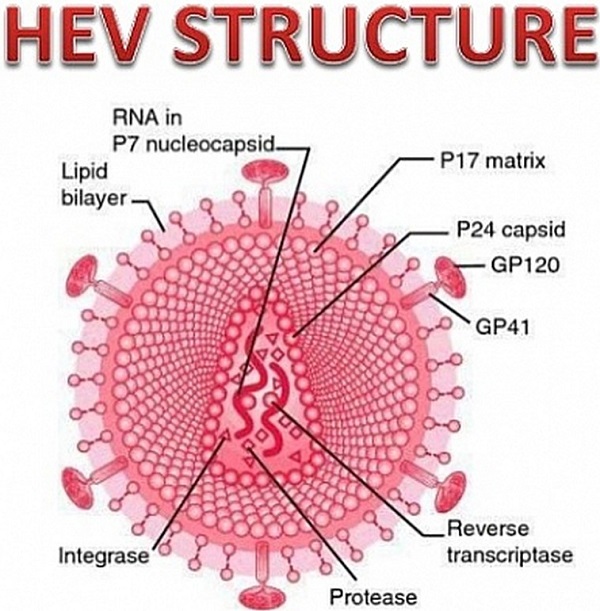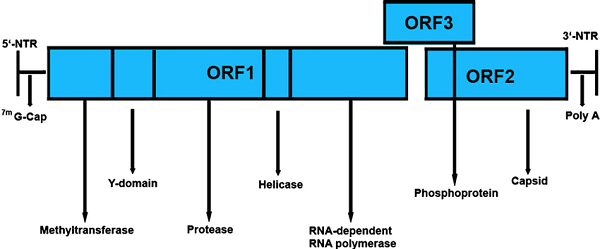Hepatitis E virus - Introduction, Classification, Morphology, Genome, Epidemiology
Classification of Hepatitis E virus
The classification of Hepatitis E virus is as follows:
Family: Hepeviridae
Genus: Orthohepevirus
Species: Hepacivirus E
Hepatitis E virus is the primary cause of enterically transmitted non-A non-B hepatitis virus (NANBH). All Hepacivirus E viruses that infect humans belong to Orthohepevirus A and consist of at least 8 distinct genotypes.
Genotype 1 HEV (mostly Asian isolates)
Genotype 2 HEV (a Mexican isolate and some African isolates infects only human)
Genotypes 3 (infects humans, pigs, rabbits, deer, mongoose)
Genotypes 4 (infects humans, pigs, rabbits, deer, mongoose)
Genotypes 5 and 6 HEVs infect wild boars
Genotype 7 HEV infects dromedary camels and reportedly a human
Genotype 8 HEV infects Bactrian camel
Morphology of Hepatitis E virus
Morphologically, the Hepatitis E virus is non-enveloped, spherical, and 32-34 nm in diameter. It is positive single-stranded RNA which is 7.6 kb in size. The genome enclosed within a capsid is composed of 60 capsid proteins.

Fig: HEV morphology (Source: vajiramias)
Genome of Hepatitis E virus
Hepatitis E virus genome contains 3 ORF:
ORF 1 => largest, codes for NSP responsible for viral replication
ORF 2 => encodes for the capsid (660 amino acid)
ORF 3 => virion morphogenesis and release
It has only 1 serotype.

Fig: HEV genome (ResearchGate)
Epidemiology of Hepatitis E virus
Hepacivirus E infects 1/3 of the world's population through exposure.
Genotype 1: Asia, Africa
Genotype 2: Mexico, Africa
Genotype 3: Western countries
Genotype 4: Asia, Europe
There are two distinct clinical-epidemiological patterns of Hepatitis E virus.
In areas of poor sanitation, HEV1 and HEV 2 are transmitted between humans by the fecal-oral route, usually via contaminated water. This results in frequent sporadic cases and occasional large outbreaks. (excess mortality in pregnant women).
In developed countries, HEV3 and HEV4 are sporadically transmitted zoonotically from animal reservoirs through the consumption of undercooked pork or meat, or shellfish.
(elderly males are at higher risk, and HEV3 may cause chronic infection).
How is HEV inactivated?
the virus remains viable after heating for 1 hour at 56°C
The cooking temperature at 71°C for 20 minutes is required to fully inactivate the virus
Host: Human, Pig, Monkey, Some rodents, and chicken